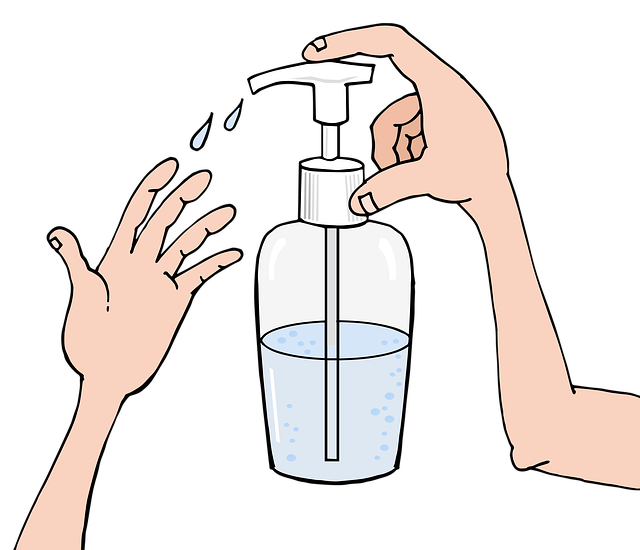Employee responsibilities for health and safety is often overlooked in workplace. From reporting hazards to using personal protective equipment, each and every action taken by an employee is crucial.
In many industries, failure to meet these responsibilities can lead to serious accidents. Being aware of the general duties is a must in a workplace. Also, everyone should follow safety protocols, and actively contribute to maintain a safe workplace. Workplace safety isn’t just a management concern, it’s a shared responsibility of all.
In this article, we’ll explore the main employee responsibilities for health and safety, and explain how you can contribute to a safer, more compliant work environment.
Understanding Employee Responsibilities for Health and Safety
Understanding employee responsibilities for health and safety is essential for maintaining a secure, productive, and legally compliant work environment. Management is responsible for setting up systems, training programs, and safety protocols. Additionally, employees highly contribute in keeping the workplace hazard-free.
Understanding your role in workplace safety is the first step toward fulfilling your legal and moral duty as part of the team.
Safety Starts with Awareness
Many workplace accidents occur not because of equipment failure or unsafe conditions, but because someone wasn’t paying attention or failed to follow simple safety procedures. Whether it’s a wet floor, exposed wiring, or a blocked emergency exit, being observant and cautious helps prevent injuries before they happen.
Know and Follow Safety Procedures
Every organization has health and safety guidelines tailored to its environment and industry. Employees must take the time to understand these procedures. This includes knowing how to handle machinery, store hazardous materials, evacuate during emergencies, and report unsafe conditions. By adhering to established safety rules, you protect yourself and those around you.
Take Ownership of Your Actions
A major part of your role in workplace safety is taking ownership of your behavior. This means using personal protective equipment (PPE) correctly, not taking shortcuts, and never engaging in risky behavior. If you’re unsure about a process, ask for guidance. It’s better to ask questions or delay a task than to risk injury.
Employee responsibilities for health and safety also include self-discipline and accountability. Arriving to work rested, sober, and mentally focused may seem basic, but it directly impacts your safety and the safety of your co-workers.
Report Hazards and Near Misses
Another vital role you play is being proactive about identifying and reporting hazards or near misses. If you notice unsafe conditions, report it to the upper officials. Early intervention can prevent serious accidents.
Also, if an incident or “near miss” occurs, it’s important to report that too. Near misses often signal deeper problems that need immediate focus on. Your input helps improve safety measures and prevents future problems.
Participate in Safety Training
Organizations invest in safety training programs to educate employees for betterment. As an employee, your role is to attend these sessions, engage actively, and apply what you learn. Some companies also offer optional sessions on topics like mental health, ergonomic practices, or stress management. All these contribute to maintain a good work environment.
Be Part of a Safety-First Culture
Workplace safety is more than just rules and checklists. Encourage your peers to take safety seriously. Remind them of proper procedures when necessary, and contribute to open communication. By promoting a safety-first mindset, you help create an environment where everyone feels responsible and protected.
General Responsibilities of Employees
Understanding and fulfilling employee responsibilities for health and safety is significant to ensure a workplace. Every employee contributes equally to prevent accidents and promotes safety. Every individual in the workplace should pay attention to the work procedures to keep themselves safe. Here are the core responsibilities, broken down clearly.
- Health protocols and safety procedures should be followed strictly.
- Always abide by the safety guidelines that is provided by the company.
- Wearing Personal Protective Equipment (PPE) is required on work.
- Participate in trainings such as in emergency drill and know evacuation procedures.
- Know the correct procedure to handle equipment and tools.
- No untrained individual should operate machinery.
- Check tools before using it and remember to do a schedule inspection.
- Report damaged or malfunctioning tools immediately to a supervisor.
- Improper actions that may cause danger to any individual or group of people should be avoided.
- Stay cautious of the surrounding environment and people at all times.
- Do not engage in horseplay, distractions, or unsafe behavior.
- Know your limits and ask for help or supervision when needed.
Employees Attending Training and Safety Meetings
Safety training and meetings are employed to give a proper knowledge to the employees. Regular participation in these sessions ensures that employees aware of the safety protocols, legal requirements, and best practices. In order to maintain a safe and reliable workplace surrounding, these trainings are crucial.
Health and safety regulations and workplace conditions are constantly evolving. New technologies, equipment, or processes can introduce fresh risks that employees must be prepared to handle. Additionally, legislative changes may impose new safety standards that organizations need to implement promptly.
By attending training sessions, employees reinforce their understanding of existing policies and learn how to adapt to new safety challenges.
Employees should discuss about their experiences, and ask questions about safety issues relevant to their roles. This communication helps identify potential hazards before they cause harm and fosters an environment where safety is a shared priority. When employees feel empowered to contribute to safety discussions, it strengthens the entire organization’s ability to prevent accidents and improve working conditions.
Employers typically schedule mandatory safety training and meetings. Moreover, ongoing training helps address the challenges posed by workforce changes, such as new hires or role transitions. New employees often require orientation on safety protocols, while experienced workers may need refresher courses to stay current.
Mental Health and Wellbeing Responsibilities
In today’s workplace, employee responsibilities for health and safety are not limited only to physical safety but also includes mental safety. Recognizing and addressing mental health is a significant part to create a reliable and safe workplace.
Employees have an essential role in maintaining their own mental wellbeing as well as supporting the wellbeing of their colleagues, making mental health responsibilities a key aspect of overall workplace safety.
Mental health problems can include stress and anxiety that can disrupt the performance of the employee. When workers are overwhelmed or mentally fatigued, their concentration diminishes, reaction times slow, and the likelihood of mistakes or accidents increases. Therefore, employees must be proactive in managing their mental health by adopting healthy coping strategies, seeking help when needed, and maintaining a good work-life balance.
Many organizations plan and organize employee assistance programs. Moreover, also provide counseling services designed to support mental health. It is an employee’s responsibility to take advantage of these resources to reduce stress and maintain mental resilience. Engaging in open conversations about mental health also helps reduce stigma and fosters a workplace culture that prioritizes wellbeing.
Employees should communicate openly with supervisors about workload, ask for assurrance when needed. Addressing these issues early prevents stress from turning into a mental health crisis and aligns with the broader employee responsibilities for health and safety.
Employers are responsible for providing a psychologically helpful work environment. Moreover, employees share in this duty by being vigilant, communicative, and supportive. Mental health is just as critical as physical safety in preventing workplace accidents and maintaining high performance. When employees prioritize mental wellbeing, it leads to reduced absenteeism, higher morale, and a stronger overall safety culture.
Consequences of Neglecting Health and Safety Measures
Neglecting health and safety measures in the workplace can lead to serious consequences that affect not only individual employees but also teams, operations, and the overall reputation of an organization.
When employees fail to follow established safety procedures, the most immediate consequence is the increased risk of accidents and injuries. These can include small falls and slips to life-threatening incidents involving machinery or hazardous materials.
Injuries not only affect the wellbeing of the employee involved but can also result in lost productivity, increased medical expenses, and a higher workload for other team members. In extreme cases, negligence can lead to fatalities.
Neglecting safety measures also exposes the organization to legal consequences. Every employer has a legal duty to maintain a safe working environment. When an employee ignores safety protocols or behaves recklessly, they may be held accountable for their actions.
This could lead to disciplinary action, suspension, or even termination of employment. In some jurisdictions, employees may also face personal liability if their negligence results in serious harm or property damage.
Financially, the costs of neglecting safety can be enormous. Workplace accidents may result in increased legal fees. Moreover, there is a chance of being charged potential fines from regulatory bodies.
Even minor incidents can result in costly investigations and mandatory changes to operations. For small businesses, these financial burdens can be particularly damaging, sometimes leading to downsizing or closure. All of this underscores the importance of every worker embracing their employee responsibilities for health and safety.
Beyond legal and financial impacts, neglecting health and safety has a negative effect on workplace morale. When employees witness unsafe behaviors going unaddressed or feel their own wellbeing is not being prioritized, it creates an environment of fear and mistrust.
This can increase job dissatisfaction and also turnover. As a result, skilled workers will not stay for longer in the workplace and will switch job. A strong safe workplace mainly gives employee confidence and contributes to higher productivity.
Neglect can also damage the company’s reputation. Moreover, the information about the accidents or safety violations can spread fast, especially in today’s digital world. Clients, partners, and customers are less likely to trust a company that doesn’t prioritize the safety of its people. Obtaining trust and reputation after such events becomes almost impossible and require more effort.
Another consequence of ignoring health and safety is the effect on mental health. Unsafe environments trigger stress and anxiety. Mental health is a crucial part of modern employee responsibilities for health and safety, and neglect in this area can be just as harmful as physical risks.
FAQs
- What are the basic employee responsibilities for health and safety?
Employees should know and follow safety procedures. They should use the equipment correctly and also report hazards. Moreover, avoid actions that could endanger themselves or others.
- Why is it important for employees to follow health and safety policies?
Following policies helps prevent accidents and injuries, ensuring a safe workplace for the employee.
- How should employees use personal protective equipment (PPE)?
Employees should wear PPE correctly whenever required and maintain it in good condition to protect themselves from workplace hazards.
- Can employees refuse to perform unsafe work?
Yes, employees can refuse to work if they think of the workplace as unsafe and should report the concern to management.
- How often should employees participate in safety meetings?
Employees should attend all scheduled safety meetings to stay updated on policies and hazards.
- Is it an employee’s responsibility to learn about new safety protocols?
Yes, employees must stay informed about updates and implement new safety measures promptly.
- Can employees be held liable for workplace accidents?
In some cases, employees can face consequences if they neglect safety duties or act recklessly.
Conclusion
Workplace safety should be given priority in any industry. Employee responsibilities for health and safety matters the most. When workers follow safety procedures, use equipment properly, attend training, and remain aware of their actions, they contribute directly to a safer, more productive environment.
Neglecting any of these responsibilities can often direct the way to serious consequences. However, by taking personal accountability and following established protocols, employees help prevent such outcomes and support the overall success of the organization.
Lastly, employee responsibilities for health and safety are central to building a secure and supportive workplace. When every employee commits to these duties, the result is healthier.




